
It is soon after half past eight in the morning and here is the male bird, who has just come into the nest box (in this case Box2).
Another month has passed and even though the weather is still cold, our birds are clearly preparing for the nesting season. As part of this, the old pre-nesting rituals are being played out again and again. One of these involves the male leading the female into the nest box, only to leave her by herself as soon as she joins him. Another involves the female repeatedly bringing nesting material into the nest box - only to take it out again! Examples of both these behaviours have occurred today!

It is soon after half past eight in the morning and here is the male bird, who has just come into the nest box (in this case Box2).
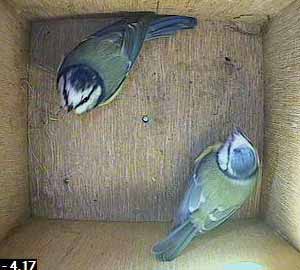
The female joins him ...

... which seems to mean that the male has to depart immediately ...
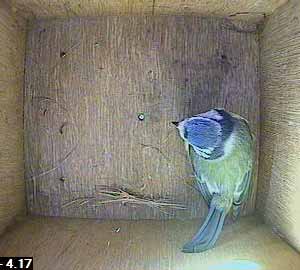
... leaving the female alone in the box.
The two birds are together in the box for only about 2 or 3 seconds!
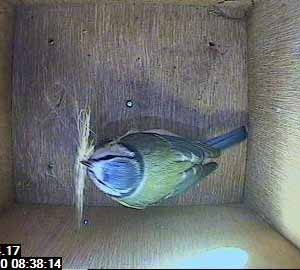
A few seconds later and she picks up about the only significant piece of nesting material in the nest box ...

... and flies off with it!
It's still quite early in the morning so the outside camera still has some dew on it - hence the fuzzy picture!
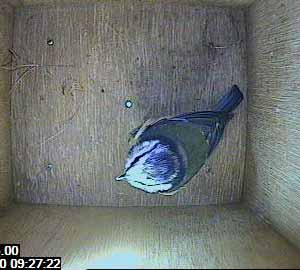
It is now an hour later and the same ritual is about to be enacted. Here is the male again.
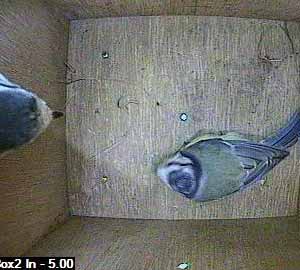
In comes the female ...
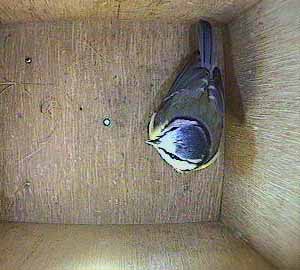
... and the male disappears so rapidly that we didn't get a picture of his going!
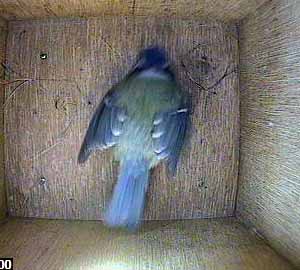
This is another of the rituals - the nesting wriggle. Here the female presses her body onto the floor and wriggles herself forward using her legs and wings to propel her forward. When the box is full of nesting material, this has the effect of creating the nest cup for her eggs.
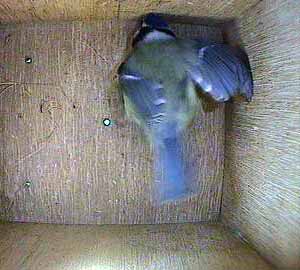
The wriggle usually ends with the female hitting her head on the side of the box! What happens inside bluetits' nesting sites in the wild, I've no idea!
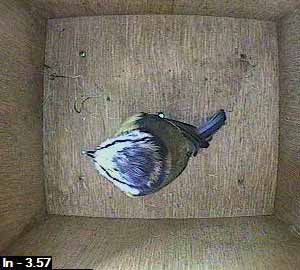
At the end of this page, I have included two pictures, one of the male bluetit ...

... and the female, so you can see how easy it is to tell them apart. I wish that distinguishing between the two birds was as easy as this for all of our pairs of birds!
Although the male's head feathers are always more masculine (tousled and ruffled) than the female (whose head feathers are smoother and softer looking) the male above has these characteristics in abundance. Whether that is because he is in some way a particularly masculine bird, or just a grizzled old bird I do not know!